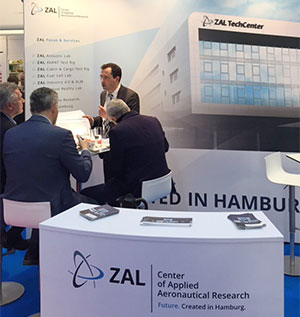While closer collaboration between all parties involved in the development and delivery of new aircraft cabins is clearly much needed, concrete examples of such collaboration are generally hard to come by. However, the industry’s mindset does seem to be shifting and after speaking to a number of suppliers at Aircraft Interiors Expo in Hamburg, FTE is encouraged by the appetite for co-creation within the industry – something we have really been pushing for over the last few years. The fact that customer experience is at the top of many people’s list of priorities is also hugely encouraging.
‘Airspace by Airbus’ impresses as TAP signs up for new-look cabin
Following the recent launch of the “Airspace by Airbus” cabin, and the subsequent announcement that TAP Portugal will be the launch operator of A330neo with the new cabin brand, FTE was given a guided tour of the new cabin by Ingo Gäthje, Head of Cabin Design Office, Airbus. While last year’s showcase of the 11-abreast Airbus A380 seating configuration raised some passenger experience concerns, this year’s unveiling of the “Airspace by Airbus” cabin received an overwhelmingly positive reaction.
Seeing the cabin up-close, it is easy to see how a number of features can benefit the passenger experience. The A350-style welcome area gives an immediate impression of space, the LED-based mood lighting system helps to create a sense of calm, the lavatory boasts a contemporary feel with its “touchless” features, and the larger overhead bins address the fact that more and more passengers are boarding with carry-on luggage. Importantly, economy class passengers stand to benefit from the features. From an airline perspective, the cabin provides them with a flexible “canvas” on which they can project their brand; an important point in an age in which differentiation is arguably more important than ever before.
ZAL innovation centre highlights industry’s welcome shift in mindset

Following the tour of the Airbus stand, Gäthje guided FTE to the ZAL booth to find out more about the pioneering innovation centre, which opened in Hamburg last month. The ZAL TechCenter will eventually host up to 600 people to conduct research in a variety of areas, including cabin technology, 3D printing, fuel cells, the Internet of Things and virtual reality.
The research centre is a joint project of the City of Hamburg, Airbus, Lufthansa Technik, the German Aerospace Center (DLR), four universities and twelve other partners. Experts from various stakeholders will be based on-site, collaborating with the aim of making innovations market-ready more quickly. From FTE’s perspective, the opening of the ZAL TechCenter is a huge step forward for the industry, because as highlighted in the recent Onboard 2025 Think Tank project, closer collaboration between all stakeholders is necessary to help drive innovation and make the aircraft cabin of tomorrow a reality. ZAL should help achieve exactly this.
Zodiac promotes customisation and individualisation with DMS approach
Fresh thinking was also on display on the Zodiac Aerospace booth, where Ian Scoley, VP Industrial Design at C&D Zodiac, explained to FTE how the Dynamic Modular System (DMS) approach to aircraft cabin design can provide airlines with the “customisation and individualisation” they crave, rather than tying them down to a catalogue approach. He explained that there are four pillars of DMS: embrace differentiation, maximise revenue generation, enhance the user experience and simplify the ownership experience. “We’re saying let’s get the backbone (of the cabin) in place and then put 90% of the horsepower into creating what the airline wants,” Scoley said. Referring to the cabin design and delivery process, he added: “We all need to step back and understand why we’re doing things instead of just following a spec,” and added that engaging all stakeholders in a grand conversation at the start of the process would benefit all involved; again a point highlighted in the Onboard 2025 Think Tank.

Zodiac also received recognition for its Lifestyle Cabin concept, which won the design award for Visionary Concept in the Crystal Cabin Awards. The Lifestyle Cabin demonstrates a reclassification of classes away from a hierarchical system and features modular seating, self-service points and new revenue generation opportunities, with only a small percentage of capacity reduction.







